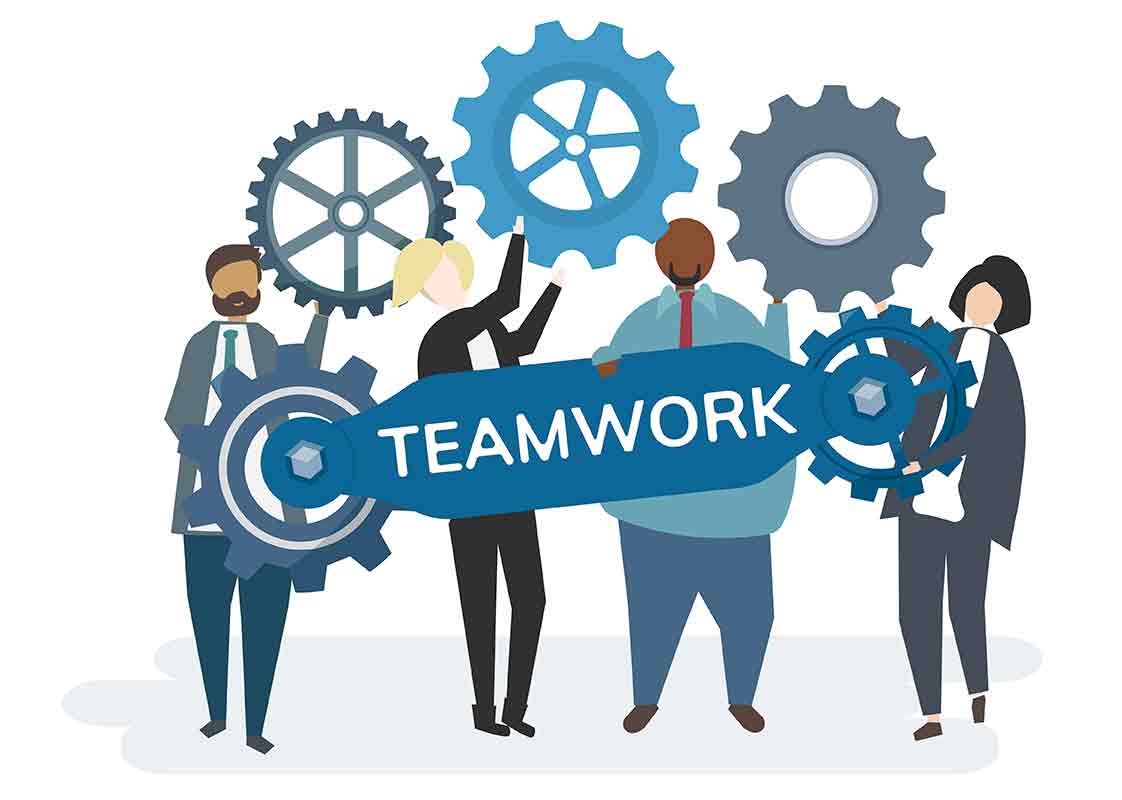Teams serve as the fundamental support structure within any thriving organisation. Regardless of whether you’re a member of a fledgling startup, a medium-sized enterprise, or a sprawling multinational corporation, teams hold a central position in accomplishing objectives and fostering inventive advancements. Nevertheless, a critical component for teams to operate efficiently is clear and distinct roles and duties.
This comprehensive manual will examine the significance of establishing team roles and responsibilities, investigate the advantages it bestows upon your organisation, and present a systematic procedure for its successful implementation.
What Makes Roles and Responsibilities Crucial within a Team?
Imagine a sports team without positions or a symphony orchestra without sheet music. Chaos would ensue, resulting in confusion and a lack of cohesion. The same principle applies to workplace teams.
1. Clarity and Focus:
- Roles define each team member’s position and function within the team.
- Responsibilities outline what tasks and duties are expected from each team member.
- This clarity ensures everyone knows their specific contribution, eliminating confusion and redundancy.
2. Efficiency and Productivity:
- With well-defined roles and responsibilities, teams can work more efficiently.
- Team members know what to work on, reducing downtime and idle efforts.
- This improved effectiveness results in more output and a quicker project completion time.
3. Accountability:
- Precisely outlined responsibilities simplify ensuring that team members are answerable for their contributions. With tasks assigned and well-documented, it becomes transparent who bears the responsibility for each project facet. Accountability nurtures a feeling of ownership and dedication within the team, fostering a stronger commitment among its members.
4. Better Communication:
- Roles and responsibilities serve as a communication tool.
- They facilitate discussions about project expectations, timelines, and individual contributions.
- A successful team’s foundation is its ability to communicate effectively.
5. Adaptability and Growth:
- As teams evolve and projects change, roles and responsibilities can be adjusted accordingly.
- This adaptability ensures that your team remains agile and capable of taking on new challenges.
Now that we understand the importance of roles and responsibilities let’s explore their numerous benefits to your organization.
Benefits of Establishing Clear Roles and Responsibilities
- Increased Productivity:
When team members know exactly what is expected of them, they can dive into their tasks with focus and determination. This heightened productivity cascades, leading to faster project completion and overall success. - Team Success:
Clear roles and responsibilities not only benefit individuals but also the entire team. When everyone effectively fulfils their roles, the team’s collective effort propels it toward success. It’s like a well-coordinated orchestra producing beautiful music. - Enhanced Morale and Momentum:
Achieving success in one’s role is a morale booster. Team members who excel in their responsibilities contribute positively to the team’s overall confidence and motivation. This newfound momentum becomes a driving force for future projects. - Efficient Resource Allocation:
Roles and responsibilities help in resource allocation. You can assign tasks to individuals based on their strengths and expertise, ensuring that resources, including time and talent, are used optimally. - Clear Decision-Making:
When team members know their roles, they can make decisions within their scope of responsibilities confidently. Delegating decision-making authority to various levels can expedite procedures and enhance the effectiveness of addressing issues.
Having delved into the advantages, it’s time to dive into the intricate details of crafting these roles and responsibilities proficiently.
Guide to Crafting Roles and Responsibilities: A Step-by-Step Approach
- Determine What Needs to Get Done:
Begin by creating a comprehensive list of all the tasks and responsibilities required for your team’s projects and goals. This list should encompass current and past tasks to identify gaps or opportunities for improvement. Consider the following questions:- Were past projects successful, and what could have been improved if not?
- Are there tasks that need attention but need to be noticed or assigned?
- Acknowledging these assignments represents the initial phase in guaranteeing nothing goes overlooked. Assessing Strengths and Weaknesses: Your team members are your most valuable resources, each with distinctive strengths and vulnerabilities. Scrutinize their competencies, backgrounds, and individual characteristics to align them with responsibilities that capitalize on their strengths.
- When assigning responsibilities, consider the following:
- Who excels in specific areas or has a proven track record?
- Is there someone better suited for tasks where others might have weaknesses?
- By playing to each team member’s strengths, you’re ensuring efficiency and boosting their confidence.
- Refer Back to the Job Descriptions:
Job descriptions serve as a foundational reference point when assigning roles and responsibilities. They outline the core functions and expectations for each team member’s position. However, it’s crucial to go beyond the formal job descriptions:- Take into account interpersonal skills, interests, and past successes.
- Tailor assignments to align with both job descriptions and individual characteristics.
- This personalized approach ensures that team members are engaged and motivated.
Get Feedback:
Effective teamwork involves open and transparent communication. Encourage your team members to provide feedback on the roles and responsibilities assigned to them. By seeking their input, you gain valuable insights and demonstrate that their opinions matter. Here’s how to facilitate feedback:
- Use regular check-ins and team meetings as opportunities for discussion.
- Be receptive to suggestions for adjustments and improvements.
- Feedback is a valuable tool for refining roles and responsibilities over time.
Team Member Roles and Responsibilities
- Active Participation: Team members should actively engage in team activities and discussions. Their input and contributions are vital to the team’s success.
- Effective Communication: Clear and open communication is essential. Team members should actively listen, share ideas, and provide updates on their progress.
- Task Completion: Each team member must complete their assigned tasks and assignments within the specified deadlines.
- Collaboration: Teamwork often involves collaborating with others. Team members should be willing to work together, share knowledge, and support their colleagues.
- Continuous Improvement: Encourage team members to seek growth and skill development opportunities. Long-term success hinges on the ability to acquire new knowledge and adjust accordingly.
Team Leader Roles and Responsibilities
Team leaders assume a critical role in shaping and overseeing roles and duties. Here are several essential tasks entrusted to team leaders:
- Providing Direction: Team leaders should provide clear direction and guidance. This includes setting objectives, outlining the team’s mission, and defining the path to success.
- Delegating Tasks: Effective delegation is a core responsibility. Team leaders must assign tasks and responsibilities based on individual strengths and project requirements.
- Planning and Scheduling: Team leaders often manage project timelines and schedules.
Enhancing your living space has never been easier with FloorPup! Explore our wide selection of hardwood flooring, get expert floor care and maintenance tips, and find inspiration in our gallery. Our professional floor fitters, skilled driveway pavers, and reliable carpet repair services ensure top-quality results. Learn more about our commitment to quality on our about us page. Visit FloorPup and transform your home today!
FAQS
What is job role and examples?
A job role is a specific set of responsibilities and tasks assigned to a position within an organization. Examples of job roles include software engineers who develop applications, teachers who educate students, and nurses who provide healthcare services.


